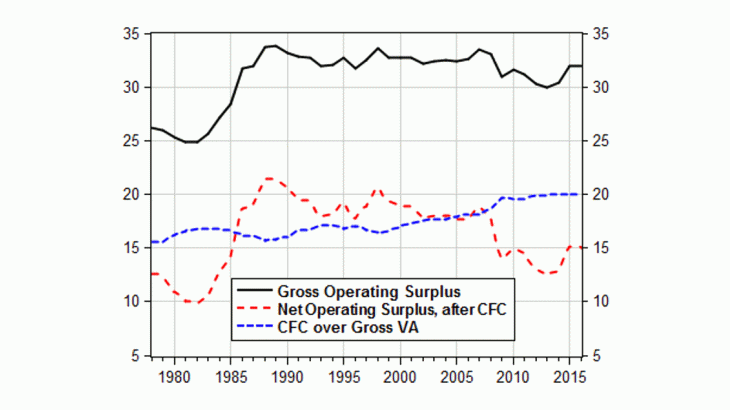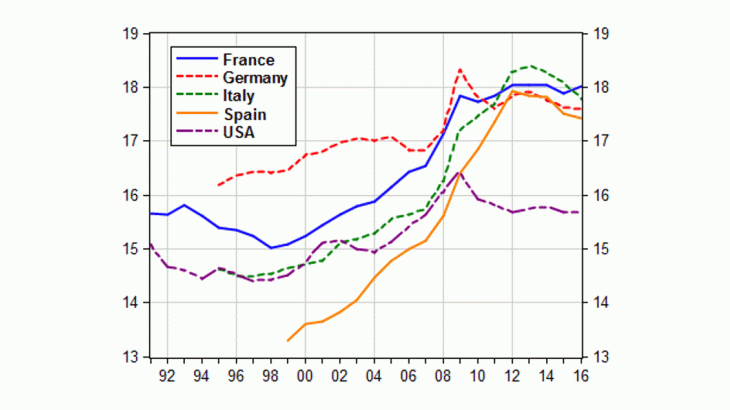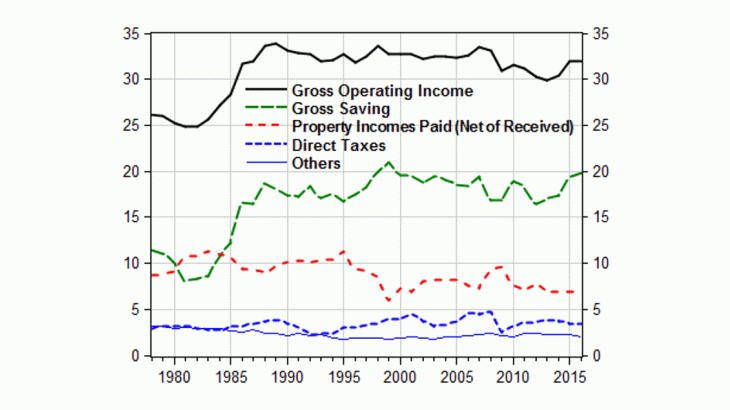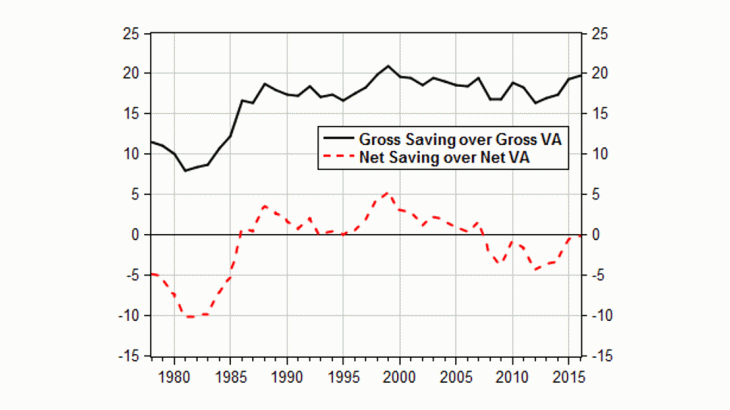Capital deterioration and net operating surplus
Consumption of fixed capital (CFC) corresponds to the deterioration of the capital required for production. The concept of CFC is applied to gross value added to calculate net value added, which finances the remunerations of factors of production.
It took some time for managers to grasp the notion of capital depreciation. In "The Visible Hand: The Managerial Revolution in American Business" (1977, page 279), Chandler explains that the question of depreciation was not considered in accounting until fairly late: "...until well into the twentieth century, nearly all large industrial firms continued to use replacement accounting, which their managers had borrowed from the railroads. As on the railroads, they defined profits as the difference between earnings and expenses, and the latter included repairs and renewal."
The concept of depreciation is now well understood, but the measurement of CFC in national accounts is complex and imperfect. It is based on useful life and declining investment effectiveness assumptions, rather than on repeated statistical observations. Due to this measurement problem, national account aggregates (most notably GDP) are usually expressed in gross terms. The approach used in this article, however, puts this difficulty aside and considers the extent to which the changes in the position of French NFCs differs when "net" aggregates are used.
Chart 2 presents the ratio of CFC to gross value added in the major European countries and the United States. Due to the availability of series, this international comparison is based on the economy as a whole, whereas Chart 1 deals with French NFCs only. We can see that in general the ratio trends upwards, although since 2009 the increase has been smaller in the United States than in the major European countries. The reasons behind this divergence have not been identified, although the possibility that it is at least in part due to differences in CFC estimation techniques cannot be ruled out.



